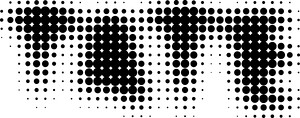O.K. – The Musical
April 1–May 1, 2017
April 3–May 29, 2017
Ongoing display
Albert Dock
Liverpool L3 4BB
United Kingdom
The second iteration of Tate Liverpool’s We Have Your Art Gallery, a series of experiments in co-design and audience involvement in institutional programming will present Christopher Kline’s O.K. – The Musical. The project is an evolving, living exhibition, providing a new perspective on the story of Kinderhook, New York, hometown of the Berlin-based artist. Working with the public, Kline iteratively reframes and subverts often subjective historical narratives, addressing themes such as imperialism, classism and slavery to interrogate whose version of history survives and proliferates, and why. Such non-dominant perspectives are interwoven with myth-making, folklore and anecdotes as a means of further exploring the past. The wider project revisits other early cultural exports and anomalies originating in Kinderhook, such as the post-colonial tale The Legend of Sleepy Hollow by Washington Irving, as well as moments throughout history ranging from the so-called Mohican’s first interactions with English explorer Henry Hudson, to a series of Bigfoot sightings in the 1980s.
The musical, which traces back the history of Kinderhook to pre-colonial times, takes its name—”O.K.”—from an abbreviation for “Oll Korrect,” a comic misspelling of all correct. Its usage was further popularised during the 1840 re-election campaign of President Martin Van Buren. A native of the town, Van Buren’s nickname of “Old Kinderhook” was translated by his supporters—who formed the “O.K. Club”—into slogans such as “Vote for O.K.” Though he failed to win re-election, the term stuck. Today it is used by Kline as a title, starting point and metaphor for how small-town peculiarities find their way into broader, unexpected uses and forms.
Built slowly and deliberately over a number of years, O.K. – The Musical is an ongoing socially engaged artistic research project, in which each new iteration focuses on a small selection of micro-histories. Realised and presented in collaboration with community groups from across Liverpool and Lancashire, the project erodes hierarchies between various forms of craft, design, education, and art, to demonstrate what can be learned by upending the perceived distinctions between “high” and “low” culture. Proposing a different take on the town’s story, new “histories” and narratives will be developed via the musical, that will become part of the existing Kinderhook lore. The project will culminate in a pair of theatrical performances on April 29 and 30.
Supported by the Creative Europe Programme of the European Union, as part of Collaborative Arts Partnership Programme, Super Slow Way, Liverpool City Council and Tate Liverpool Corporate Members and Patrons
Curatorial team: Michael Birchall, Curator of Public Practice, Tate Liverpool / Senior Lecturer in Exhibition Studies at Liverpool John Moores University; Tamar Hemmes, Assistant Curator, Lindsey Fryer, Head of Learning, Francesco Manacorda, Artistic Director, Tate Liverpool; Laurie Peake, Director, Super Slow Way.
In addition, spring at Tate Liverpool also includes a pair of new displays featuring works drawn from the Tate collection, revealing different aspects and experiences of American art.
A new constellation explores the links between major American artists from the post-war period, an era in which the “triumph” of abstract expressionist painting came at the expense of seemingly outmoded forms of realism. The constellation’s “trigger” work is Orthodox Boys 1948, by Bernard Perlin, a painting charged with the anxieties and aspirations of Jews in post-war New York. In the realist scene dominated by a wall of graffiti, Perlin registers the emerging orthodoxy of abstract expressionism.
Curated by Dr. Alex Taylor and presented as part of Refiguring American Art, a Tate Research initiative supported by the Terra Foundation for American Art.
On the ground floor is a focused display of works by Ellsworth Kelly (1923–2015), whose singular approach to abstract painting reveals an enduring concern with the experience of looking at art itself as a subject. “The works were objects, unsigned, anonymous,” said Kelly, an approach resulting in “a different way of seeing.” Through his testing of the possibilities of painting, Kelly forged radical new relationships between the visible world and the art object. “If you can turn off the mind and look only with the eyes, everything becomes abstract,” he said.
Curated by Darren Pih, Exhibitions & Displays Curator, and Lauren Barnes, Assistant Curator.


